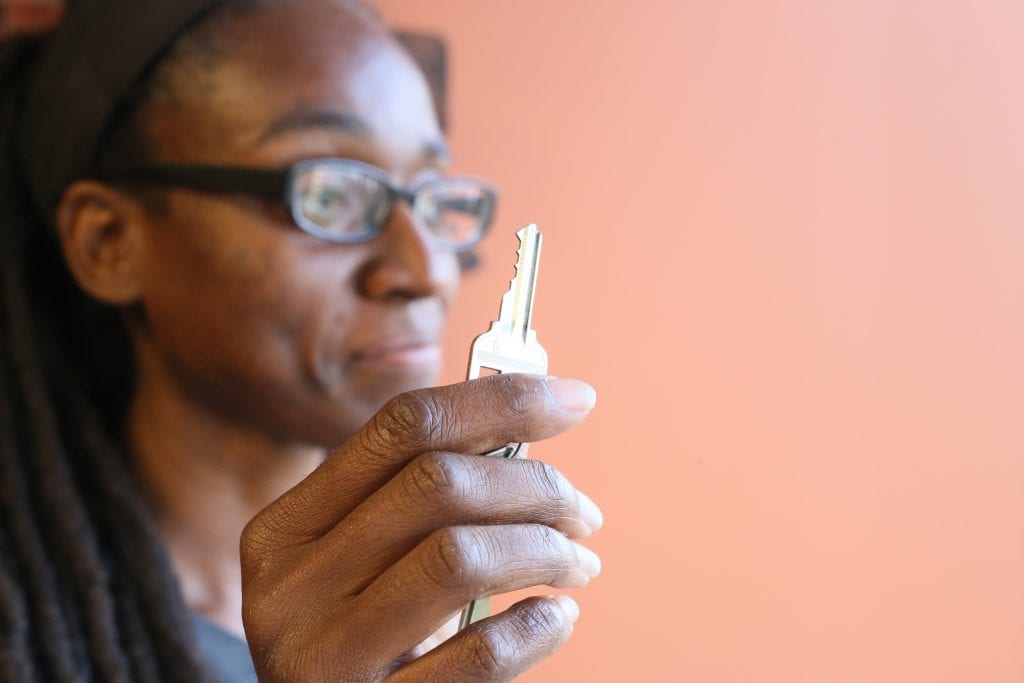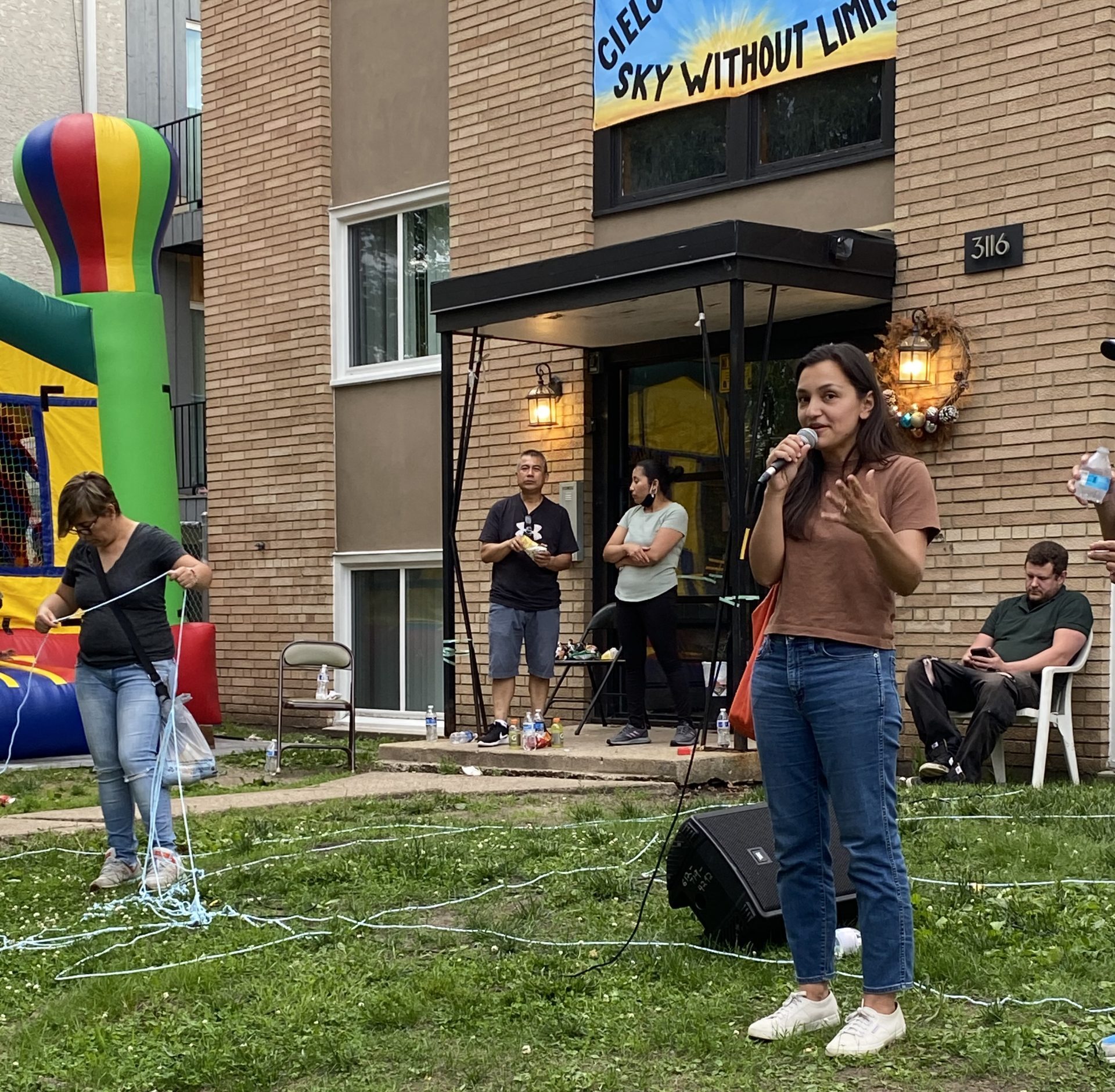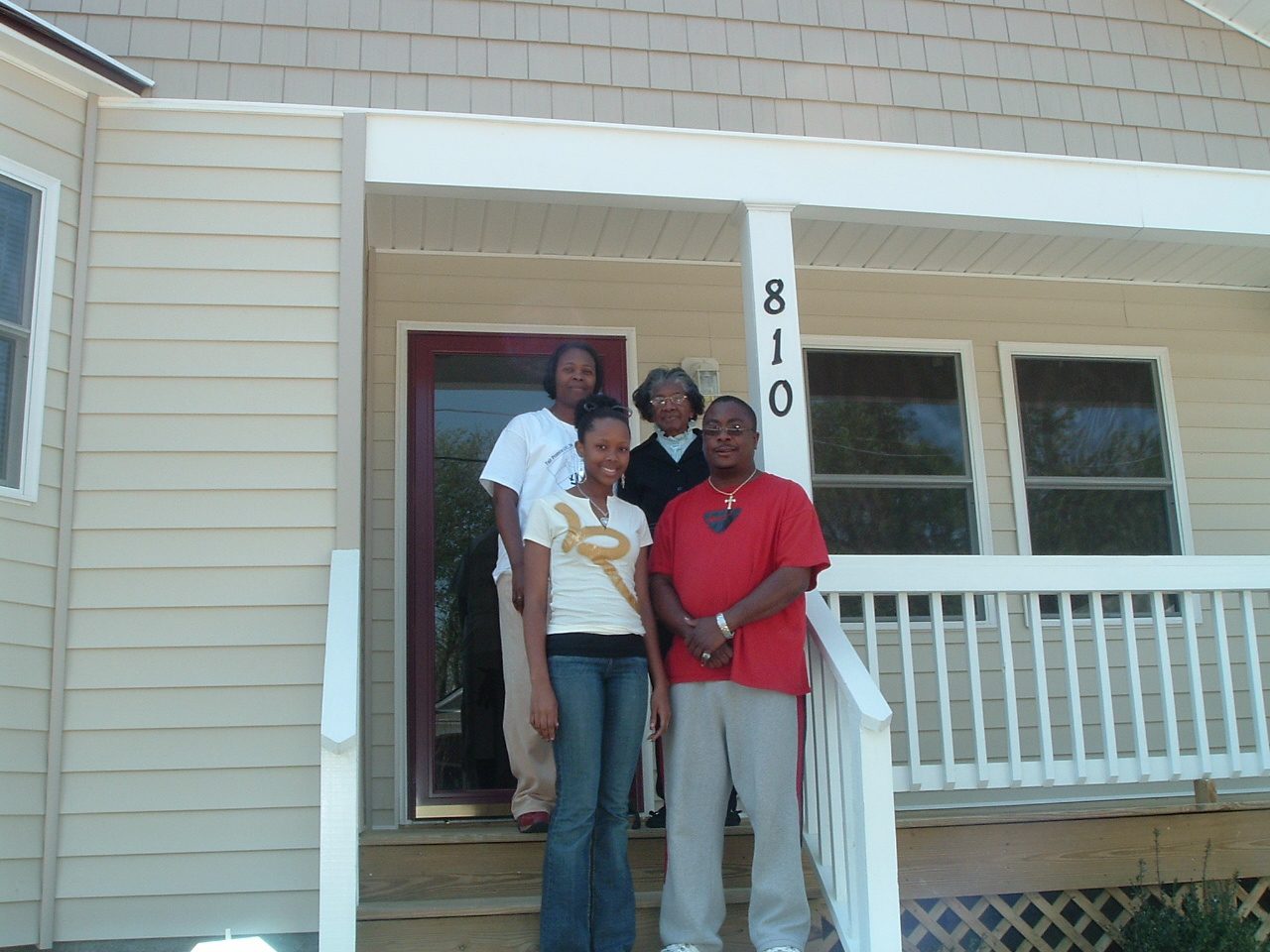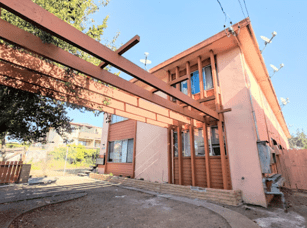This article is part of the Under the Lens series
Community Ownership Takes Center Stage

Makeisha Robey, a 43-year-old preschool teacher and mother of five, holds the key to her new home, which she purchased through the Atlanta Land Trust. The land trust currently has 20 homes in its portfolio, and more 100 in the predevelopment stage. Photo courtesy of Atlanta Land Trust
As the City of Atlanta continues construction of the BeltLine—a 33-mile network of biking, light rail, and walking trails that follows an old rail right-of-way that loops around the city—many neighborhoods are feeling the crunch of rising rents, which often accompany large-scale transit-oriented development projects.
Understanding Community Land TrustsWhat are CLTs? How do they work? What are the benefits and areas of concern? We break it down for you in this handy explainer. |
In its 2020-2025 Strategic Plan, the Atlanta Land Trust (ALT) set a goal of developing 300 affordable, energy-efficient homes on communally owned land by 2025 to mitigate the worst effects of rising housing costs. ALT currently has 20 homes in its portfolio, with 125 units contained within three projects that are all in the predevelopment stage and are expected to begin construction near the end of 2021 or the beginning of 2022. These homes will be predominantly constructed for homeownership, although ALT does plan to pursue some rental housing development within the next five years.In Atlanta’s Old Fourth Ward neighborhood, home of Martin Luther King Jr., average home prices more than doubled from $150,000 in September of 2012 to more than $350,000 in February of 2021. And in Atlanta’s Pittsburgh neighborhood, average home values more than tripled during that same time, from approximately $74,000 to over $226,000, according to Zillow.
[RELATED: Affordable BeltLine Project Still in Progress]
“We want to be an anti-displacement tool,” says Amanda Rhein, executive director of ALT. If residents in those neighborhoods see their rents rise, ALT wants to be an option for them to stay in their community through an affordable form of homeownership. Community land trusts (CLTs) help preserve affordability by taking land off the market. The homes on the land may be leased for long periods of time, often for 99 years, to families or individuals looking to buy one. Homes on CLT land have a fixed resale limit that prevents them from being sold over a certain price to keep the home affordable for future homebuyers, while still providing opportunities to build equity.
How ALT Began
The Atlanta Land Trust was originally founded as the Atlanta Land Trust Collaborative (ALTC) in 2009, in the middle of the Great Recession. The organization was born out of a convening hosted by the Atlanta Housing Association of Neighborhood-Based Developers (AHAND) and the Annie E. Casey Foundation’s Atlanta Civic Site. The vision for ALTC was of a central server that would provide resources, instruction, and support for a network of smaller, neighborhood-based community land trusts. One benefit of this model was that ALTC would not have to build relationships from the ground up. It could partner with existing organizations that already had relationships with residents.
However, according to Rhein, “it was bad timing.” The Great Recession levied a massive toll on Atlanta’s community development corporations. “There weren’t a lot [of CDCs] to begin with and then after the recession, a lot of them, their capacity was significantly reduced, or they went out of business. . . . The decision was [that] we need one large, strong community land trust organization, and if later down the road it begins to make sense to have smaller land trusts, we can revisit the model at that point. But there was a need to prove the concept at scale in order for neighborhood-level community land trusts to even be viable.” Additionally, Rhein says, there was a lack of resources available for small organizations, forcing some to compete against one another.
Currently, the efforts of the Atlanta Land Trust are focused in the south and west corridors of the BeltLine with Grove Park, Vine City, English Avenue, Washington Park, and Mozley Park in the city’s northwest, and Oakland City and Pittsburgh to the southwest. “It’s where the opportunities are. Because there is interest in creating affordable housing, there’s interest in mitigating displacement, and the land is more affordable than elsewhere along the BeltLine corridor.” The area is also where most of ALT’s eight partnering organizations are working.
Governance
Most community land trusts have a tripartite board structure composed of three equally represented groups: CLT residents, other residents from the community in which the CLT stewards land, and wider public stakeholders and experts. While ALT also has a tripartite board, its three groups are neighborhood residents—which include both CLT residents and those living in the broader community—nonprofit representatives, and public and private stakeholders such as private attorneys, private financial institutions doing business within or in proximity to the Atlanta BeltLine, and representatives from the City of Atlanta, the Atlanta Housing Authority, Invest Atlanta, and the Land Bank Authority.
‘we can’t have 45 people on our board of directors, so we have to narrow it down to ensure representation from the neighborhoods where we are most active right now.’
Rhein explains that when ALT was created, the Anne E. Casey Foundation had assembled a group of stakeholders with a large nonprofit presence. “Because the effort was being led by nonprofit organizations, I think that they felt strongly . . . that [ALT’s board] needed to have nonprofit representation because they were at the table and invested time in evaluating the community land trust model.”
ALT’s bylaws state that nonprofit representatives are drawn from philanthropic organizations, nonprofit housing organizations, or other nonprofit service or advocacy organizations operating on a citywide or regional basis, with one of those seats reserved for representatives from the Atlanta BeltLine Partnership. Rhein also noted that in addition to the six seats on the board of directors reserved specifically for neighborhood residents, three of the nonprofit representatives and at least another three of the public and private sector representatives also happen to be residents in the community. “There’s a lot of overlap,” Rhein says. ALT looks for residents who are particularly active in their community, whether it is in their neighborhood associations, religious centers, or other locally based organizations.
Because the organization has a focus area expanding across 45 neighborhoods, “we can’t have 45 people on our board of directors, so we have to narrow it down to ensure representation from the neighborhoods where we are most active right now,” Rhein says. Last year, ALT created a nominating committee that crafted a list of potential board members informed by conversations between board members, community residents, and neighborhood leaders.
COVID-19 has hampered previous plans to create an advisory board, although Rhein noted that such a board may still be on the table in the future. The type of advisory board that ALT was envisioning is not one that has governance capacity, but a volunteer body that provides feedback to the board and supports it in areas such as fundraising or community outreach. “Right now, we really wanted to focus on just building out the regular board of directors before we then moved on to another advisory board,” says Rhein.
Sustainability
Board expansion is just part of the organization’s goal of scaling up to become a sustainable organization. “The most important part of getting to scale is having a more balanced revenue model where we have a more significant component of our revenue [be] through earned income, rather than contributed income,” Rhein says. Contributed income includes donations from individuals, corporations, philanthropies, and the public sector. These funding sources cannot sustain the organization over the long term, which is why Rhein wants to see increased revenues through fees, income, and other activities. “A big part of that is having a portfolio that supports those fees.”
The fees that Rhein mentions include ground lease fees, which are paid by homeowners each month; developer fees, which are generated with every development that ATL completes; and up to a 5 percent stewardship fee, which is charged at the point of initial sale or resale of the home to the buyer. In the past year, ALT has charged an average stewardship fee of 2 percent of the sales price of the home. “When we get to the point of resale,” Rhein explains, “we will assess that fee based on our goal to preserve the affordable price of the home, so we’re not going to charge a fee if that means the home then becomes unaffordable.” The organization is aiming toward a diversified operating budget of $1.1 million composed of equal parts earned income and philanthropic funding, as well as $11.1 million for land acquisition and development by 2025. So far, ALT has secured $580,000 for its 2021 operating budget and $3 million for land acquisition and development, and it plans to embark on a capital campaign to make progress toward its land acquisition goal.
Land Bank Partnership
One of the biggest obstacles to expansion for ALT, as for most community land trusts, is land acquisition. The irony is that while the goal of CLTs is to preserve affordability, they often struggle to acquire land due to ever-rising land values. One solution that the Atlanta Land Trust and other CLTs have explored is partnership with local land banks. Land banks are public or nonprofit entities that convert vacant, abandoned, or tax-delinquent properties into productive use by strategically acquiring such properties, clearing up any title issues or tax liens, and then transferring that land to new owners who will use it in a way that will benefit the community.
[RELATED: How to Fund Land Banks]
The Atlanta Land Trust is part of the Catalytic Land Cohort, a group of cities composed of Atlanta, Portland, and Houston that are experimenting with collaborations with land banks, organized by the Grounded Solutions network. The purpose of the Catalytic Land Cohort is to create a pipeline of publicly owned land for development into affordable housing. “We have a strong land relationship with our land bank here in Atlanta, and through that first year of work with the Catalytic Land Cohort, we were able to get a formal agreement in place with the land bank that identified 14 properties under a pilot program that we would acquire at a discounted rate in exchange for [developing] those properties into affordable housing,” Rhein says. The properties will soon be used for single-family home construction as well as renovations, all of which will go toward ALT’s goal of building 300 homes by 2025. Says Rhein, “We’re hoping that we’ll be able to continue to grow that relationship with the land bank.”
|
Please consider supporting our small and dedicated team on Patreon. |




Comments